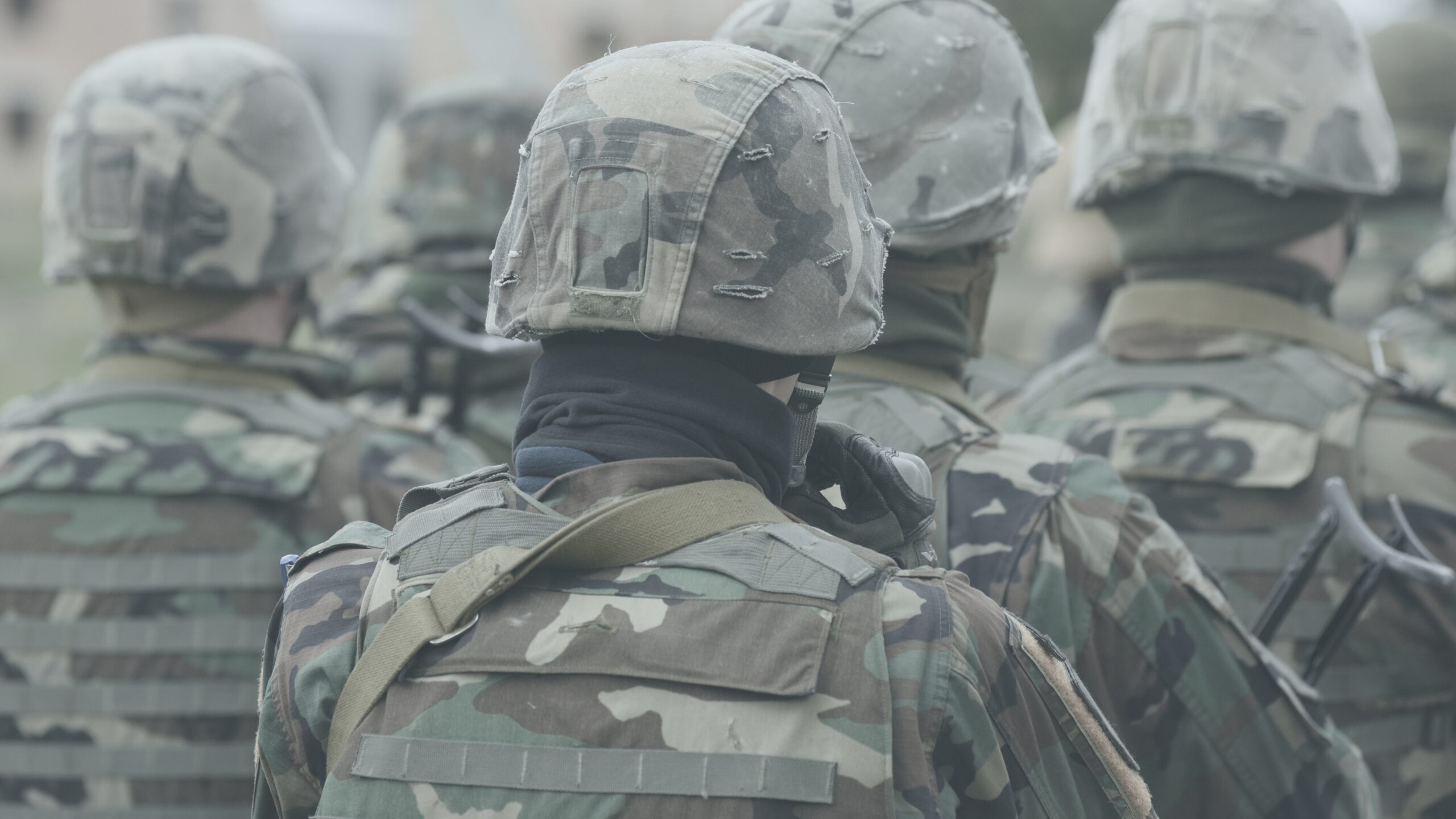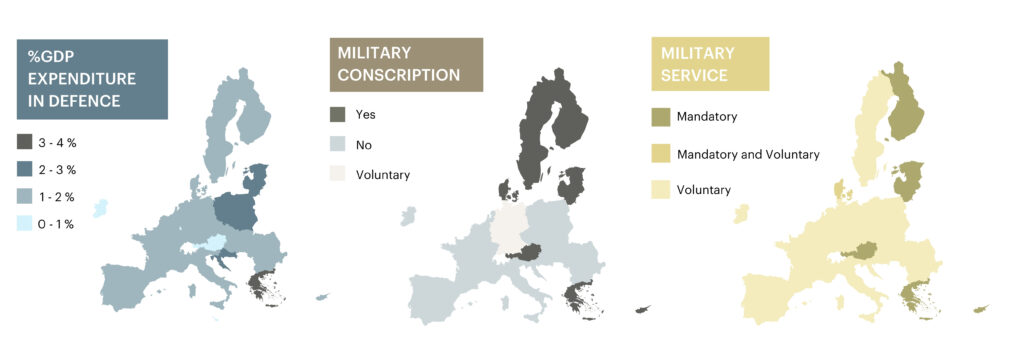The resurgence of geopolitical tensions, notably with Russia, has prompted European countries to reassess their defence strategies. This shift has led several nations to either reintroduce or extend conscription, reflecting a broader trend towards enhancing military capabilities and national resilience.
CONSCRIPTION RE-EMERGES: EUROPE’S DEFENCE STRATEGIES IN FOCUS

At Sierra Tango, we have conducted four in-depth studies on conscription in the EU. These studies explore the current status of conscription, evaluate recent policy changes, and analyse various conscription models. This article presents a detailed examination of these findings, offering insights into how different countries are adapting their military service requirements in response to contemporary security challenges.
THOSE MEMBER STATES THAT HAVE MAINTAINED OR REINTRODUCED CONSCRIPTION
Since the end of the Cold War, Europe has enjoyed relative stability, leading many nations to suspend or abolish conscription. However, the invasion of Ukraine in 2022 has significantly altered the security landscape, prompting a renewed focus on military readiness. European countries, particularly those with borders adjacent to Russia, are now re-evaluating their defence needs and strategies.
Some European countries have never suspended conscription since the end of the Cold War, thus maintaining a tradition of compulsory military service. These countries are Austria, Cyprus, Denmark, Estonia, Finland, Greece, and the Netherlands.
In light of these security concerns, several countries that had previously abolished conscription are now reintroducing or extending it. Latvia reinstated conscription on 1 January 2024, reversing its previous decision to abolish it in 2006. Lithuania, following the first invasion of Ukraine in 2015, reintroduced conscription, as did Sweden in 2018 after previously ending compulsory service in 2010.
Recent policy developments further illustrate this trend. In March 2024, Denmark announced plans to extend conscription to include women starting in 2026, reflecting a shift towards greater inclusivity in military service. Additionally, in June 2024, German Defence Minister Boris Pistorius proposed a selective military service model inspired by the Swedish system, with an aim to recruit 5,000 conscripts annually from 2025.
A VARIETY OF CONSCRIPTION AND SELECTION MODELS WITHIN THE EU
European countries are adopting a variety of models for military conscription, reflecting their respective strategic needs and resources in a changing geopolitical context.
Compulsory Military Service: Compulsory military service is in force in several European countries. In Austria, conscription is mandatory for men, and the continuation of this system was confirmed in a referendum in January 2013, when a majority of the population voted in favour. In Cyprus, conscription is also required for women, as is the case in Estonia, where military service is compulsory and may include state obligations for certain individuals. Finland has had conscription since 1951 and maintains a system of compulsory military service for all men. In Greece, conscription was mandatory for men, and up to 50% of the Greek army was made up of conscripts.
Conscription with Specific Exemption: The Netherlands retains conscription but suspended the obligation to report for service in 1997, demonstrating a more flexible approach than fully mandatory systems.
Selection by Lottery: In Denmark, Latvia, and Lithuania, an automated lottery system is employed to select recruits, providing a randomised method for fulfilling military service obligations.
Selective Conscription Model: Sweden’s model focuses on selecting conscripts based on motivation and qualifications, regardless of gender. Sweden currently conscripts around 5,500 individuals annually, with a target of 8,000 by 2025. Conscientious objectors have the option of alternative unarmed service, known as ‘vapenfri tjänst’.
Plan for Voluntary Conscription: Germany is considering a selective model based on volunteerism, aiming to recruit a limited number of conscripts through a rigorous selection process starting in 2025. The media Politico reports that the plan will involve asking 400,000 18-year-old young adults to complete a questionnaire. Of these, 40,000 will undergo medical examinations, and 10,000 will proceed to basic training. This plan underscores Germany’s commitment to a rigorous and selective approach to conscription.
CONCLUSION AND FUTURE PROSPECTS
The reintroduction and extension of conscription across Europe underscores a growing recognition of the need for robust defence mechanisms amidst current threats. Whether through traditional or selective models, these changes reflect a concerted effort to enhance military capabilities and ensure national security in a period of geopolitical uncertainty. As we continue to monitor these developments, the ongoing debate surrounding conscription will likely evolve, with each country adapting its strategies to meet its unique needs and challenges. Next week, we will explore the arguments in favour of conscription in Europe.
SOURCES
CARNEGIE, CIA, CNN, EURACTIV – 1, EURACTIV – 2, EURONEWS, ICDS, POLITICO
